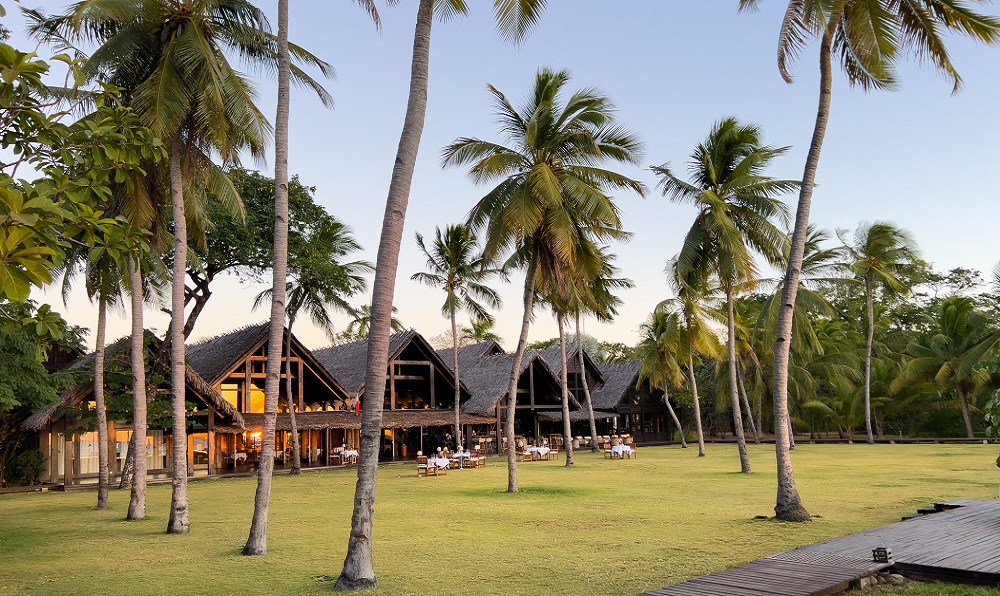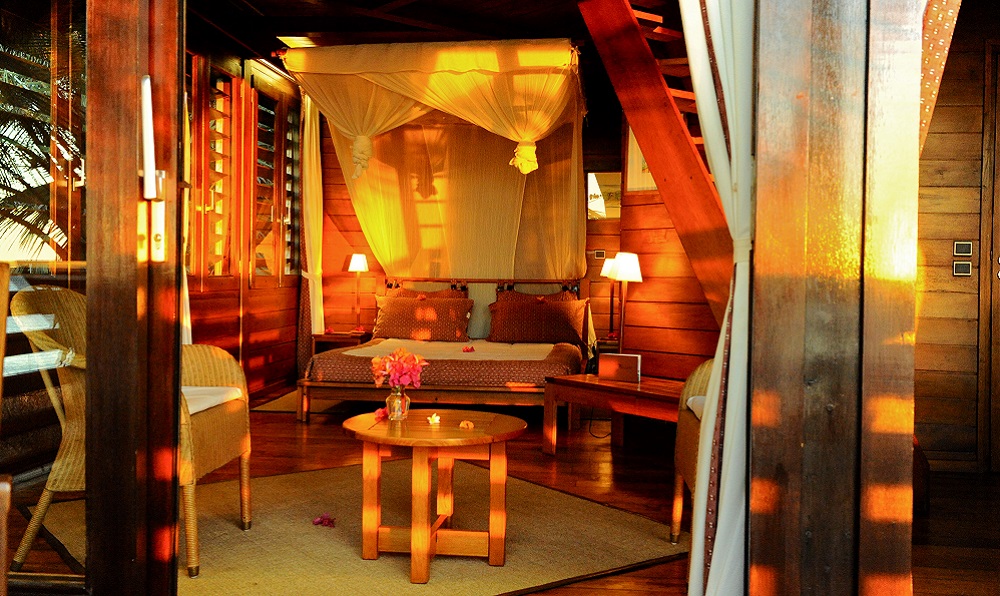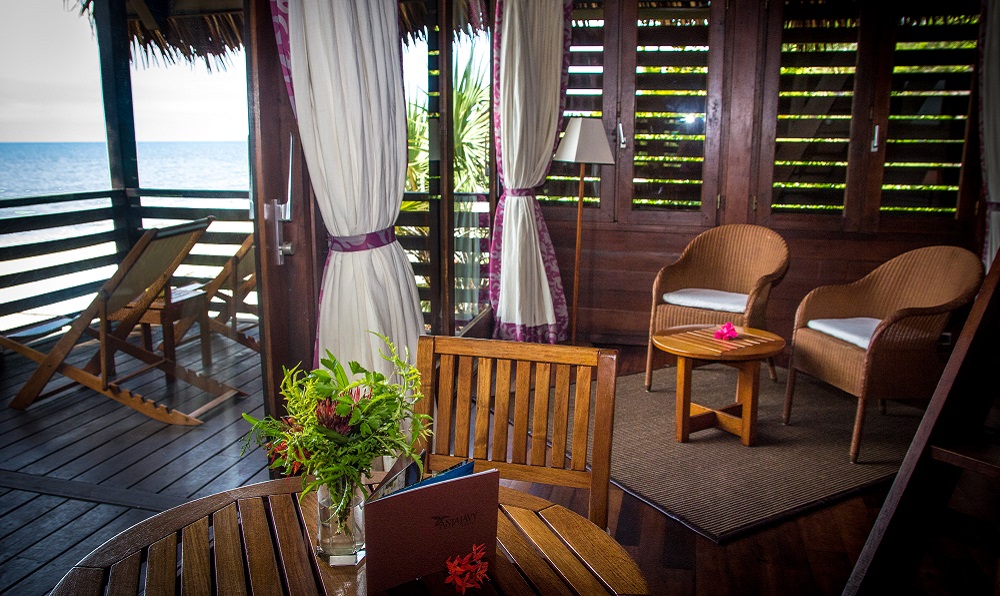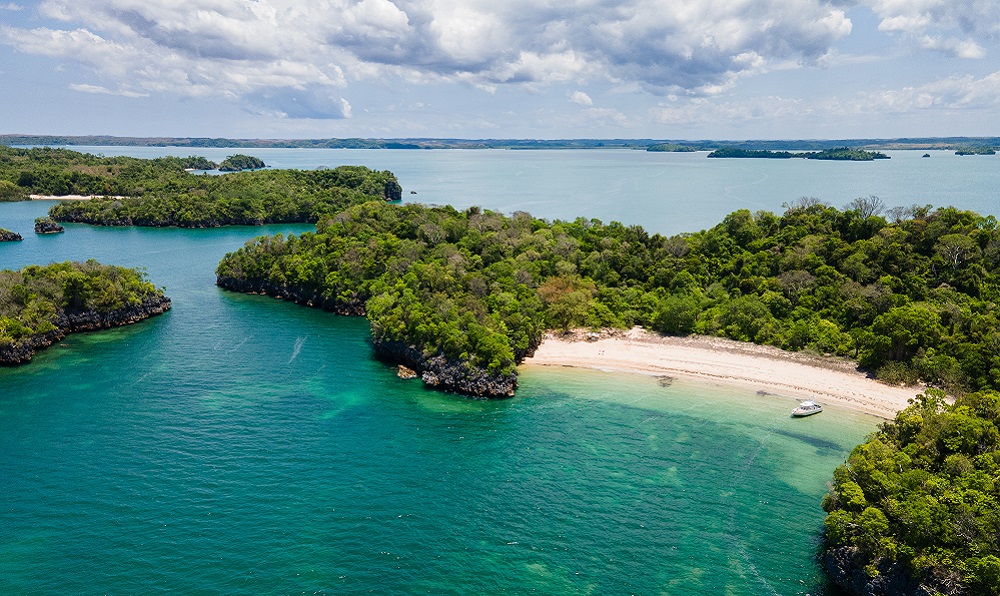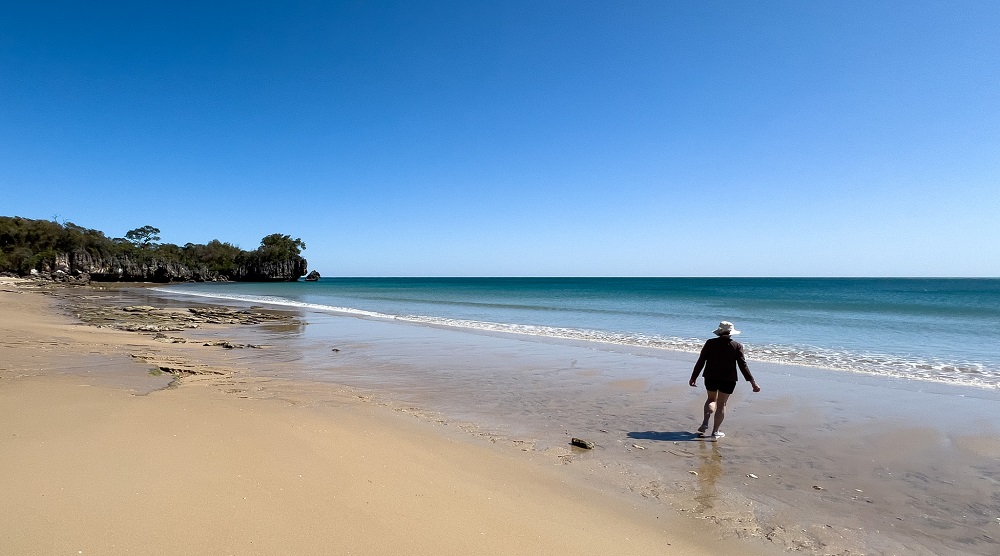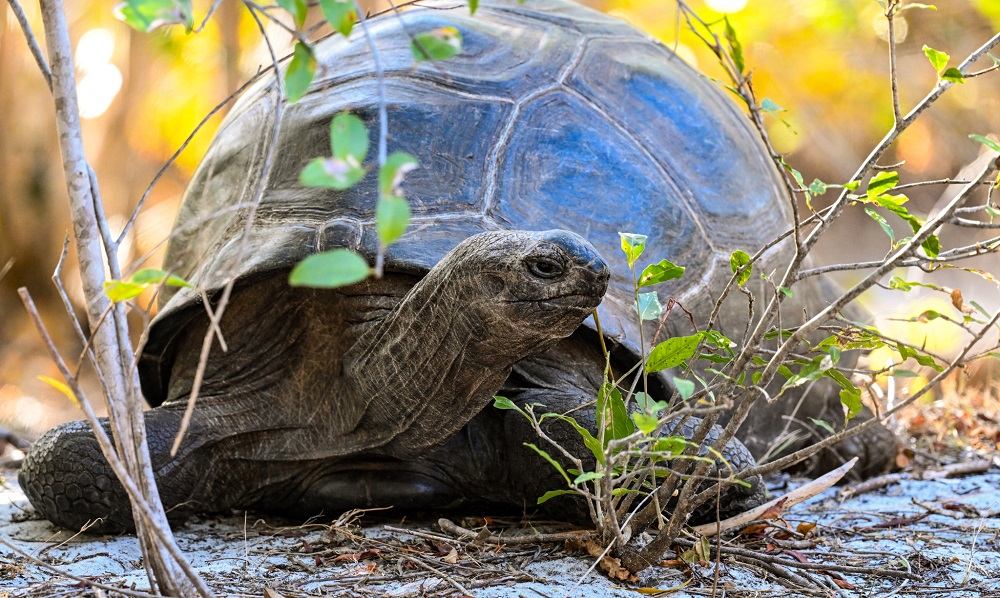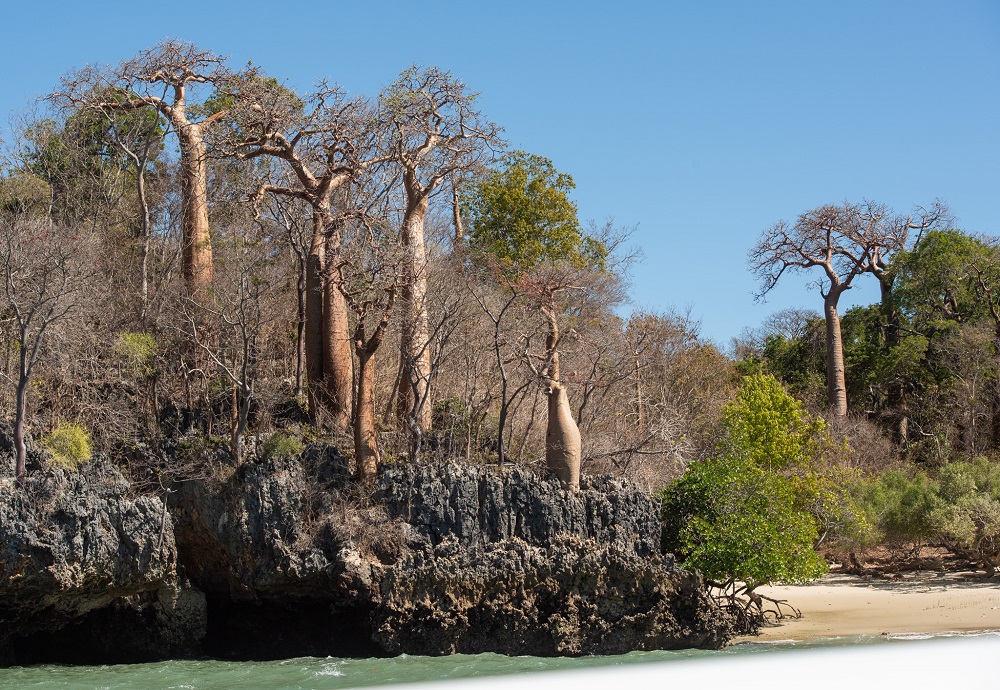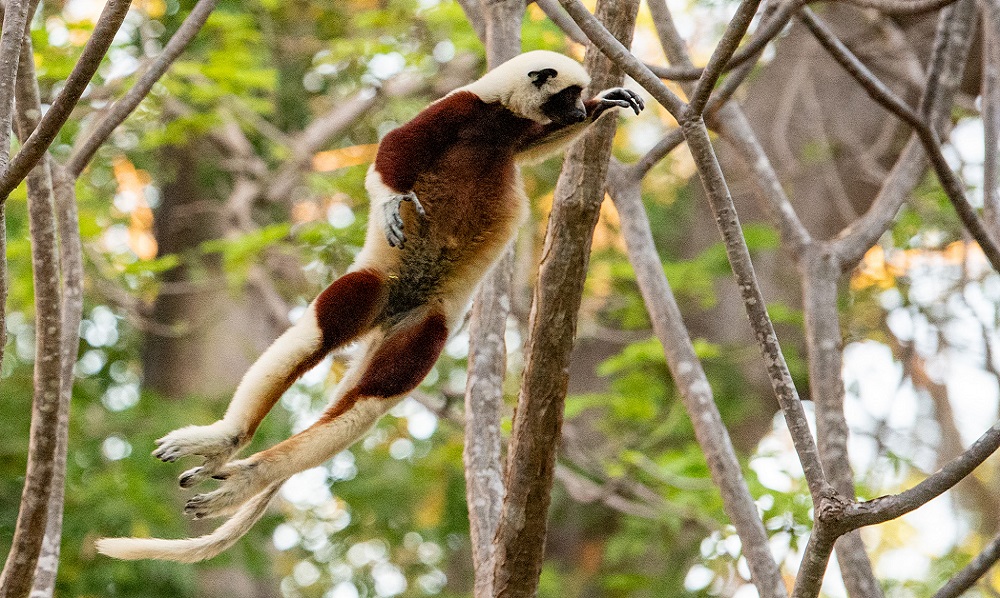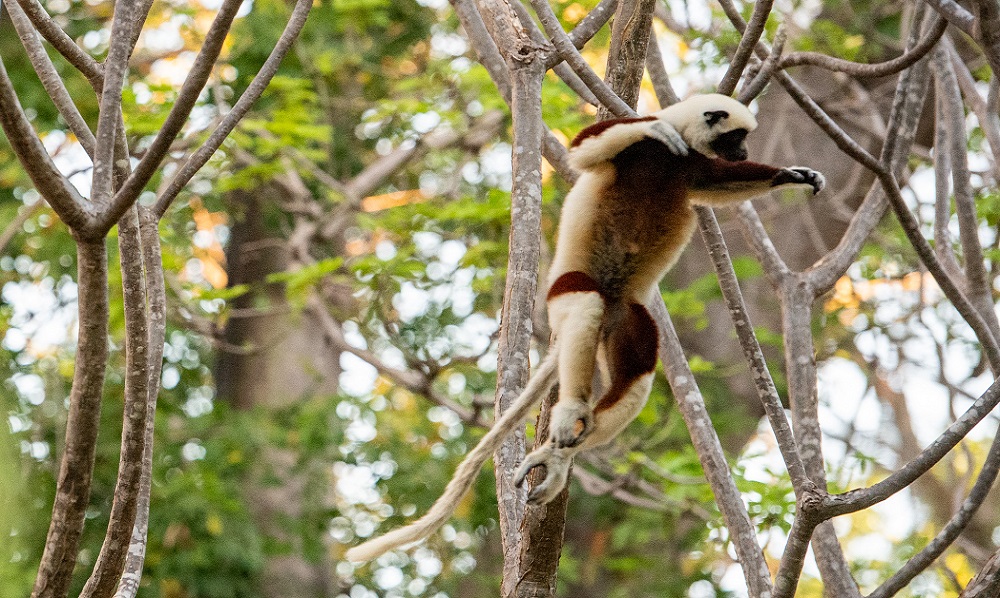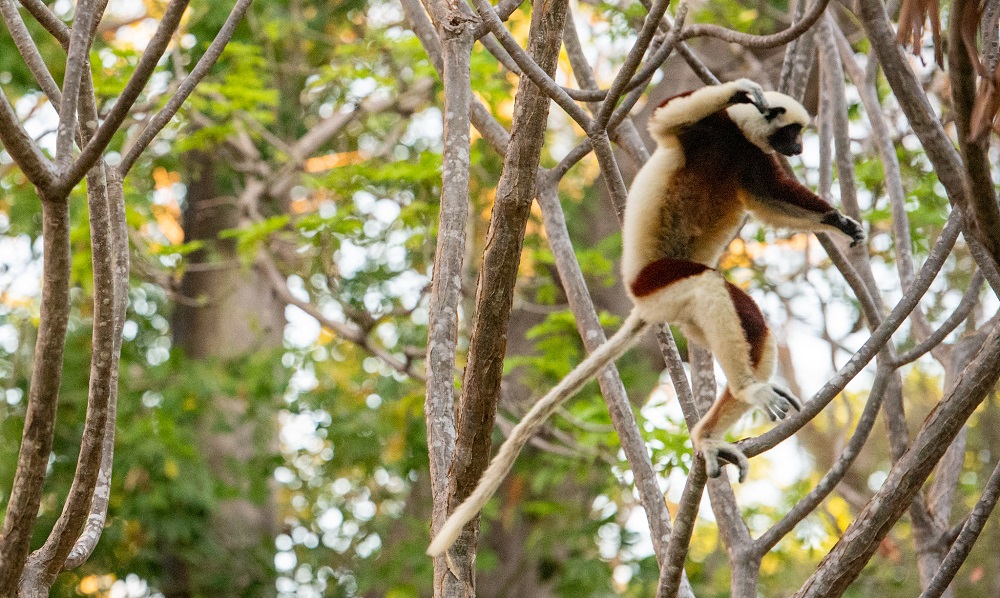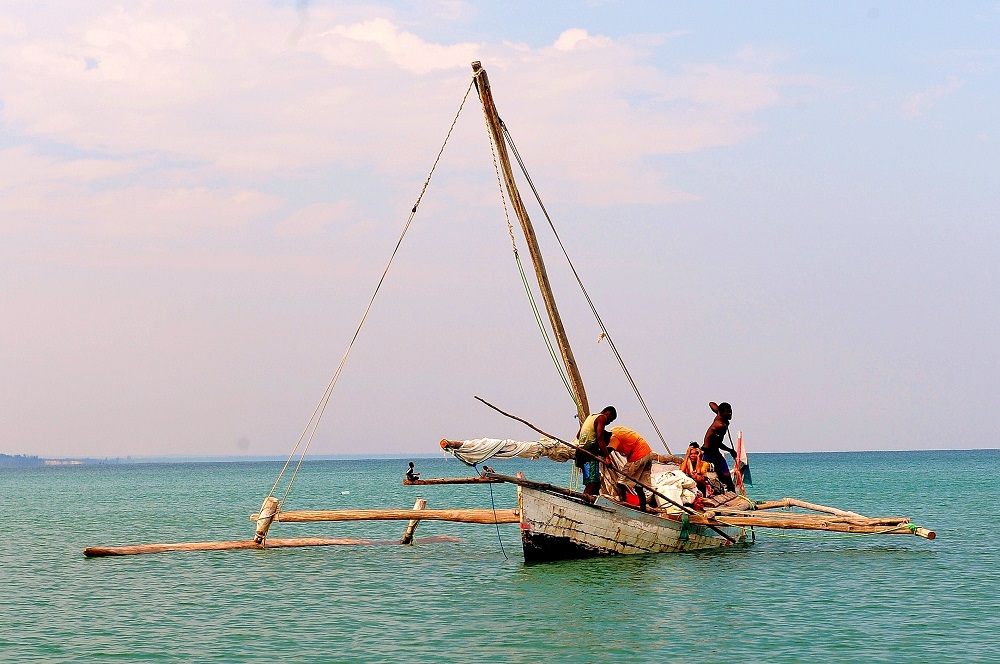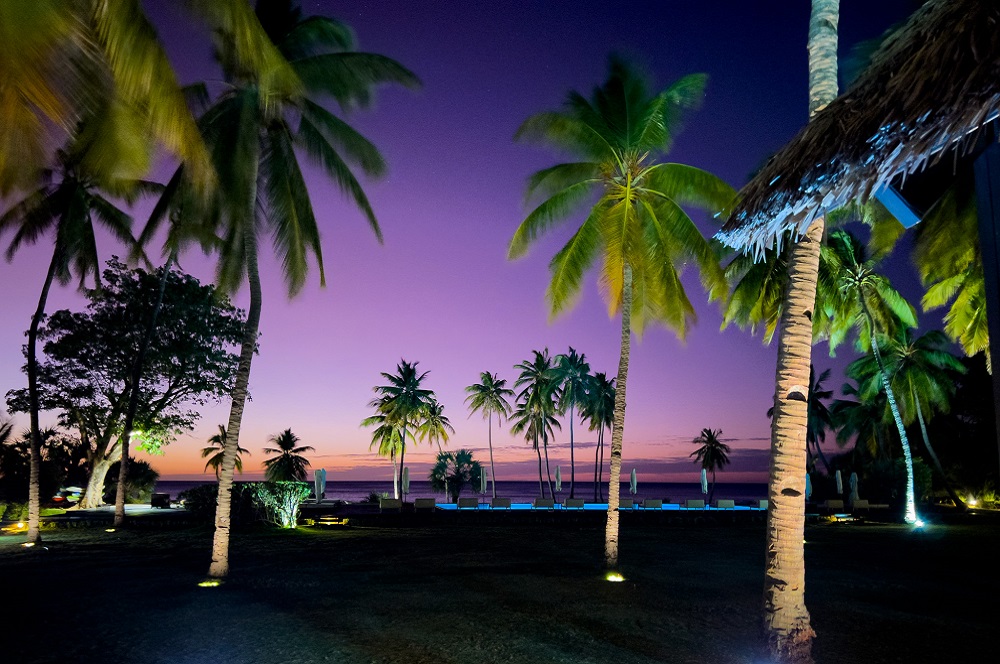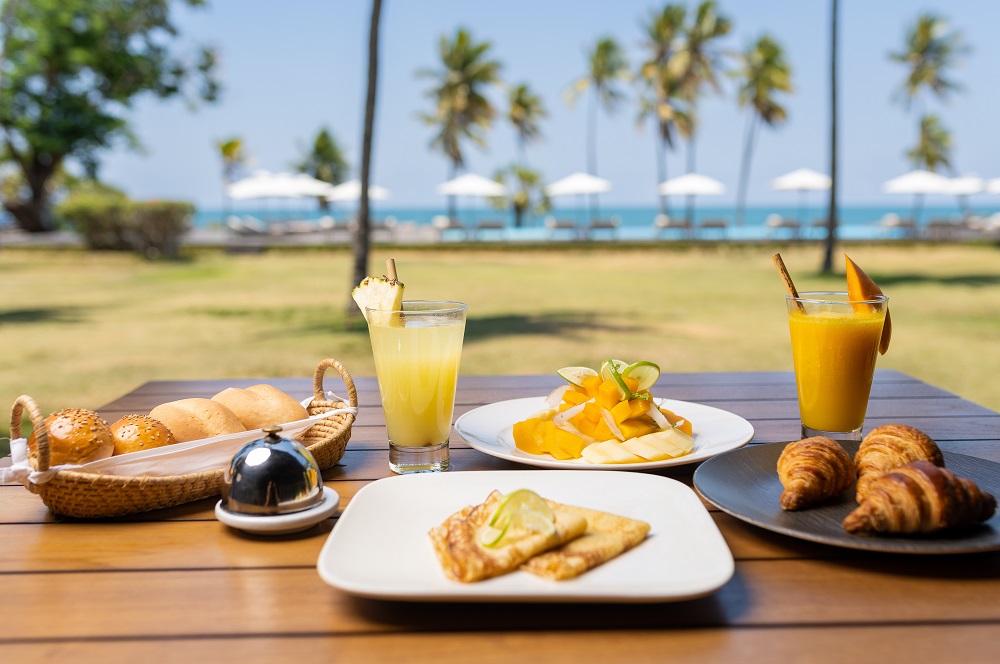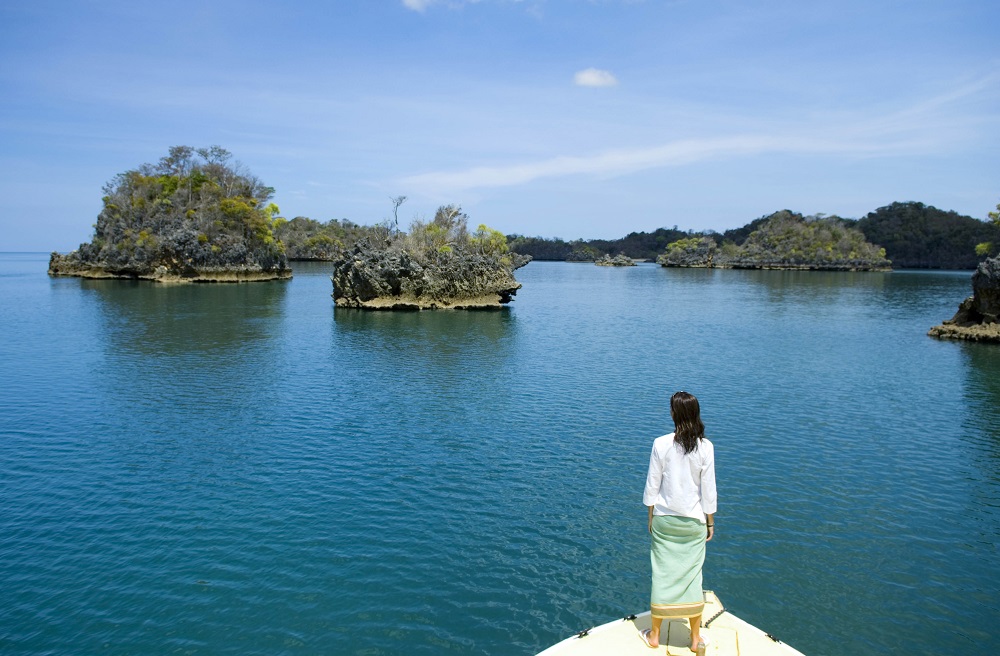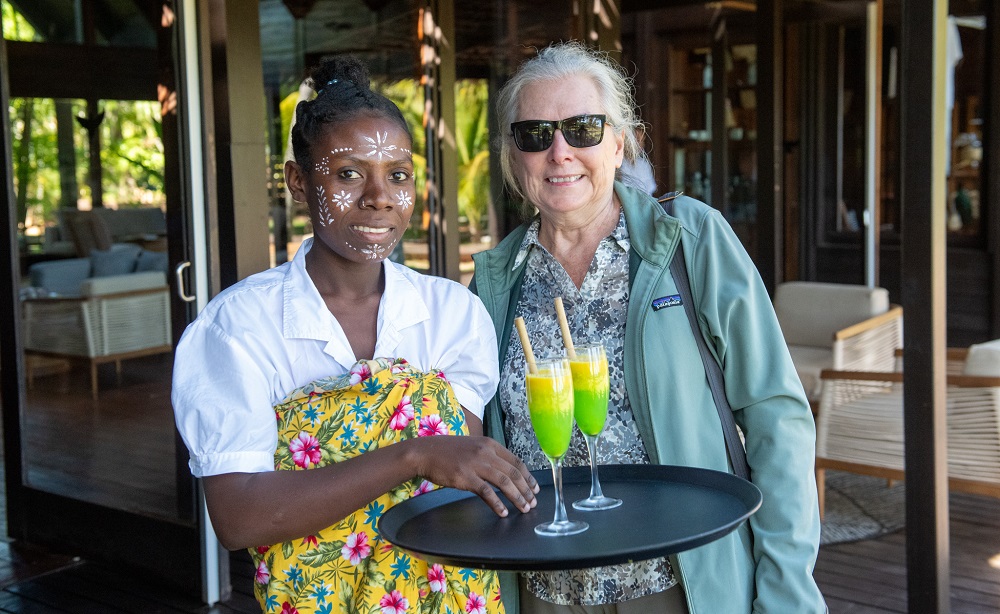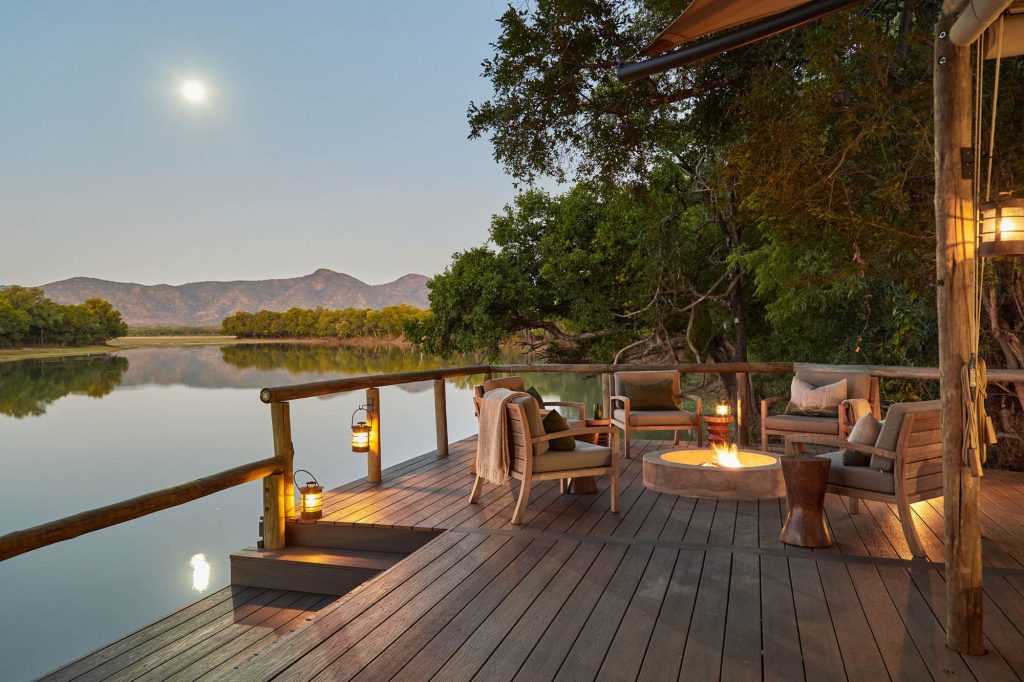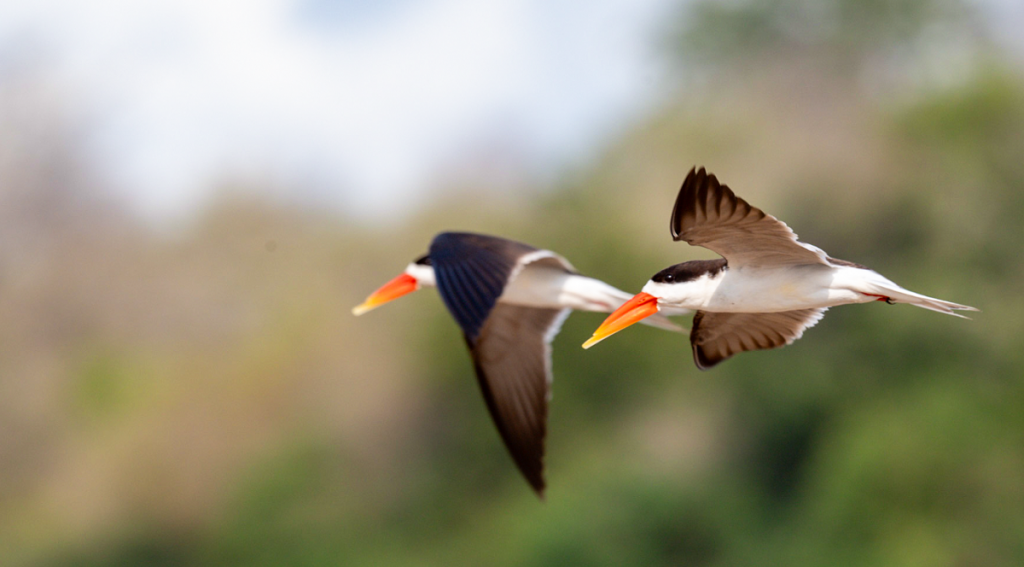Madagascar Resort of the Month: Anjajavy Le Lodge, Northwestern Madagascar Coast
I first became aware of Anjajavy some years ago at a travel industry event in Cape Town and a visit to the resort had slowly percolated to the top of our ‘must-visit’ list. Reflecting upon our all too short visit there, I regret that we had not made it to Anjajavy sooner. It is a jewel of a spot, as good as it gets on many levels starting with location (remote and isolated), setting (gorgeous) and hospitality in the wider sense, reflecting service, food and ambiance. All impeccable.
There is only one way to get to Anjajavy and it is by scheduled charter flight from Tana; the flight currently operates four times per week. There is a minimum stay requirement of three nights but I would urge prospective visitors to spend five nights at Anjajavy. It is one of the most isolated spots in western Madagascar with a Robinson Crusoe-esque feel. Several times while walking on the beautiful beach in front of the lodge, Kathy and I felt like the only people around. Of course, with the exception of a few British guests and a French family, we were. The experience there is not to be rushed so by all means stay as long as you can.
It was quite windy on the day we arrived and we found out that a stiff breeze is very much part of the experience at Anjajavy. We stopped noticing it within just hours, our attention shifting to all the other things which make Anjajavy the special place that it is. Besides being windy, it was dry and sunny, the complete opposite from the rainy, dreary eastern rainforests which we had just come from. The way to the lodge was a dusty but well-maintained track; a drive of about 20 minutes. En route, we drove through patches of open savanna habitat which was oddly reminiscent of mainland Africa. A few zebras and giraffes would not have been out of place in this dry deciduous forest habitat.
My first impression at Anjajavy was one of space and light, with pretty views over the ocean enhanced by some attractive palm trees and a large pool surrounded by unopened umbrellas, green lawns and tiled walkways. Not a thing was out of place. The main complex is dominated by an extensive indoor/outdoor dining room which encompasses a bar and boutique. Spend a few days there and you will soon find your own favorite spot for the al fresco meals.
Kathy and I thought the rooms at Anjajavy were just right. Properly air-conditioned, they were by no means huge but perfectly adequate size-wise, with a queen-sized bed with mosquito net, a breakfast area with table and chairs, a small separate bathroom with shower, a separate enclosed toilet with small sink, sliding doors which opened to a deck with chairs and a hammock, and an upstairs room with an additional double bed. The steps up to the upstairs bedroom are scarily steep so buyer beware. It would be ok for the kids but not for grandma.
As we found out right away, the food was superb. With Anjajavy being an accredited Relais & Chateaux property, I suppose that was to be expected, at least to some degree. Even so, we made the most of the extensive number of choices for all meals, with a range of local and international dishes – mostly French inspired – on offer. Everything was fresh, with much of the produce and other items sourced locally.
A word of caution: the walkways between the rooms and the main lodge are uneven with (too) many elevation changes. At night, making your way to and back from the dining area could be a potentially hazardous experience, with inadequate lighting and no rails. So be careful and use a good flashlight.
A quirky thing about Anjajavy is that it operates on its own ‘island’ time zone which is one hour ahead (later) than regular Madagascar time. So guests have to manually adjust their smartphones and watches. Guests are told about this on arrival. I never did quite figure out why the lodge adopted this practice; it seems to serve the same purpose as daylight savings in the US, which is to move the hours of human activity to make the best use of available daylight. Anjajavy is pronounced just like it is written, but the last ‘y’ letter is silent. So if you say it like ‘an-jah-JAHV’ you will sound just like a local. Or close.
Activities at Anjajavy
Anjajavy has a beautiful beach with a small and apparently safe demarcated swimming area. Before doing anything else, we spent a little while wading into the cool, crystal clear water of the Indian Ocean. It felt great. Just like at Tsara Komba which we would get to a bit later on our trip, the ocean in front of Anjajavy was swimmable irrespective of the status of the tide. Each of the ocean-view rooms has its own private umbrella and beach loungers, reached by a set of wooden steps down from the elevated rooms.
Mangrove forest sundowners
That afternoon we tagged along with three other guests on an outing by boat into a large stand of mangroves, which line the river. The mangroves – beyond several other functions which include providing a nursery area for many fish and crustacean species – also protect the area from severe damage during cyclones. On the excursion we saw a few interesting birds including dimorphic egret, Madagascar buzzard, malachite kingfisher, Madagascar bee eaters and – from a long distance away – a colony of flying foxes.
We crammed a lot into our full day at Anjajavy: an early morning birding outing, checking out the Madagascar giant tortoise rewilding project, and a boating excursion to Moramba Bay. The birding was good, and the fact that I didn’t get quite as many usable bird photos as I had anticipated was totally on me trying to figure out the autofocus on a new mirrorless camera. Maybe not the time and place for it.
Giant Madagascar tortoise rewilding project
Kathy and I were both fascinated by Anjajavy’s Madagascar giant tortoise project. Since its inception – starting off in 2018 with 12 adult giant tortoises which had been poached and then confiscated by the authorities – the project has grown by leaps and bounds. To date, more than 150 baby tortoises have hatched and are being protected in the tortoise nursery in Anjajavy. They will be returned to the wild once they are ready. The juvenile tortoises are being raised in an environment very similar to the one they will be freed into, so that they develop the foraging skills they will need to survive in the wild. The project aims to have 500 wild giant tortoises in Anjajavy Reserve by 2030 and about 2,000 by 2040. Considering that these enormous animals have been locally extinct in Madagascar for 500 years, this is groundbreaking work.
Speed boat outing to Moramba Bay
Our speed boat trip to the beautiful Moramba Bay area culminated with a sighting of a Madagascar fish eagle, a bird which we had long wanted to add to our life list. It is disheartening to know that there are only about 100 pairs of these very special birds still present in Madagascar. The bay produced several other highlights, not the least of which was seeing four or five stands of beautiful baobabs growing in limestone formations. Moramba Bay is about as photogenic a place as one could find anywhere and we could easily have spent several additional hours there. And would have liked to. Maybe with a picnic lunch somewhere or snorkeling around one of the limestone islets. Next time.
Afternoon tea with the sifakas
An activity not to be missed is the afternoon tea in a large clearing – also known as the oasis – in Anjajavy’s beautiful garden. Almost every afternoon around 5 to 6 pm ‘island time,’ a small troop of Coquerel’s sifaka adds a dash of verve and excitement to what would be a perfectly fine afternoon tea without them. Jumping seemingly effortlessly and even languidly from one branch or tree to another, they make it easy for visitors to conclude that they had made a wise choice to spend a few days here at the literal end of the world. A bonus? Spotting one or two small groups of common brown lemurs lagging behind the limelight-stealing sifakas. In their own way the brown lemurs are just as interesting.
Anjajavy – just go!
As I mentioned earlier, Anjajavy can only be reached by scheduled charter flights (and not every day of the week) from Antananarivo; there is a minimum stay requirement and it is not inexpensive, particularly if you figure in the cost of the many optional (pricey) excursions.
Even so, once you get there – and I urge everyone to do so at the first, best opportunity – you will observe the leaping Coquerel’s sifakas in the garden and think, “I should have done this sooner.”
Anjajavy Le Lodge is Madagascar redux, with lemurs, beaches, baobabs, tsingy rock formations and fascinating culture. All in one place. Beyond that you’ll experience gorgeous sunsets, sublime food and a team of lodge staff and guides delivering an all round resort experience which compares with some of the best in the world, at an affordable price point.
Anjajavy truly has it all. Location, remoteness and an ideal mix of activities. It also felt as if the team there was truly motivated to help guests experience the property and the reserve in the best possible way. Even though we spent only two nights there, we were treated to a romantic dinner in the garden on our last night. It was just perfect, ending with a plaintive song performed by six team members – a lead singer, guitarist and mini drum player and three chorus members. All working together so well, helping us create an indelible memory. In fact, all our experiences at Anjajavy contributed to a unique set of memories.
First and foremost Anjajavy is a conservation project. Manager Frederic Massoubre was proud to point out that he employs a large squad of people who have no line function in and around the lodge itself. All their efforts are devoted exclusively to maintaining the habitat and wildlife in the adjoining protected area.
The negatives? The WiFi is super slow but really this is one place where you should actively try to disconnect and reconnect with nature. There’s every opportunity for it. Also, come prepared with a wide-open wallet as there is a limited range of ‘free’ activities at Anjajavy. Unless of course your idea of a resort stay is to mostly chill by the pool and in the ocean, and enjoy afternoon tea with the sifakas. For active guests, particularly those who like to hike, there are as many as eight or nine different trails to explore, either on self-guided or guided basis. Free water activities include kayaks, windsurfing, catamaran outings and snorkeling.
Everything else is going to cost you pretty dearly, ranging from 50 Euro per person for a morning birding outing to E125 per person for a half day boating outing to Moramba Bay. Our recommendation is to pre-pay a package of activities, currently about $750 per person for a boat excursion with picnic lunch to Moramba Bay, a vehicle excursion to Antafiamoara village and the giant tortoise project, and three guided land activities: a night walk, a village visit and a bird-watching outing.
Things which we didn’t get to do include mountain biking, exploring a cave with extinct giant lemur fossils, a village visit and spending time at the pool. If you’re really into physical fitness, I think mountain biking around the reserve could be fun. It’s going to be hard with so much sand about, as will running. Comforting thought: there are no elephants or buffaloes around. Unlike mainland Africa, Madagascar has no scary large hairy mammals lurking behind bushes so go ahead and jog with your favorite tunes in your headphones.
If you want to learn a bit more about getting to Anjajavy and how to possibly combine it with one or two other spots in Madagascar – or make it an add-on after or before a mainland Africa trip – email Bert at bert@fisheaglesafaris.com. Otherwise, please leave a message with our answering service by calling 1-800-513-5222 literally any time; someone will get back to you.



